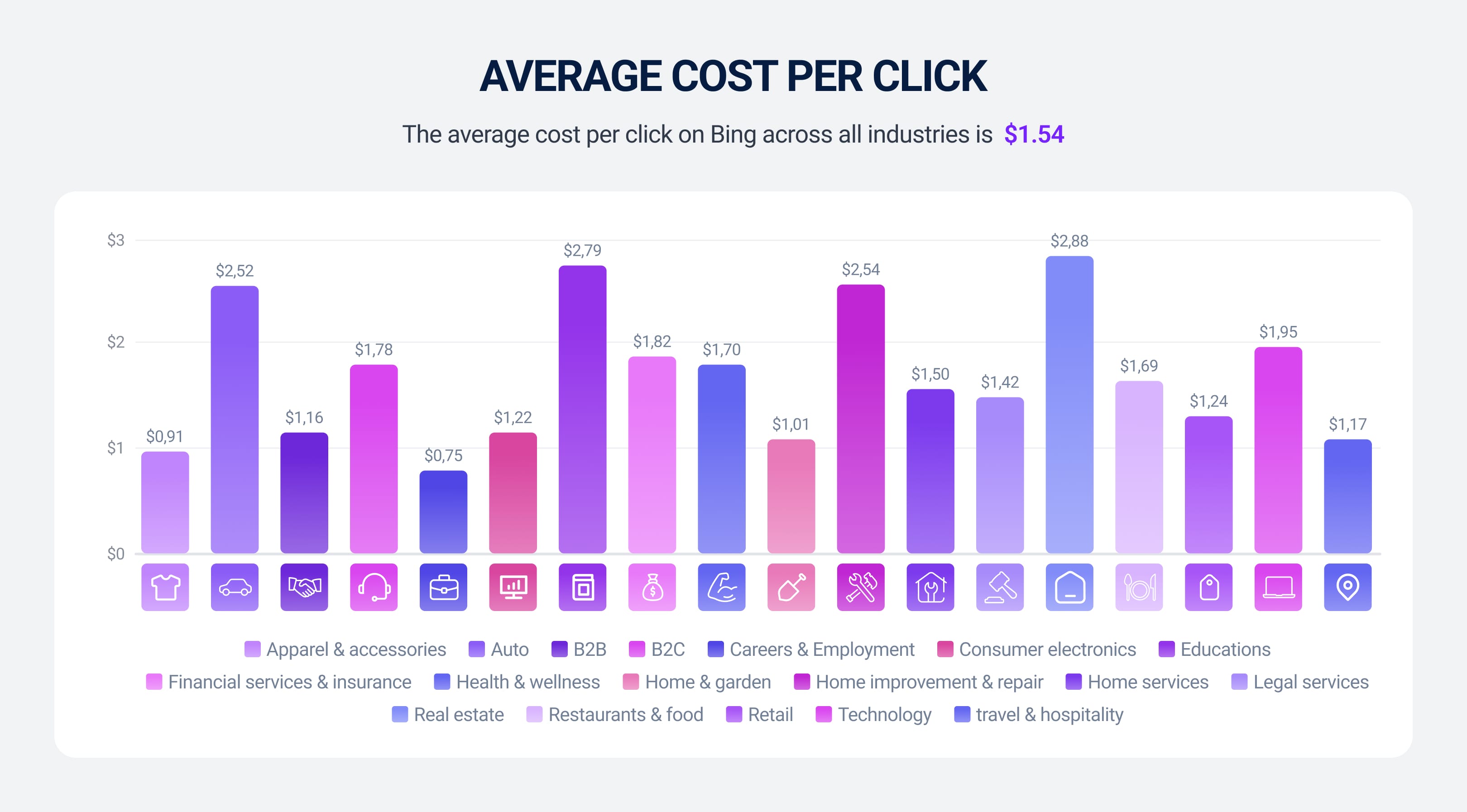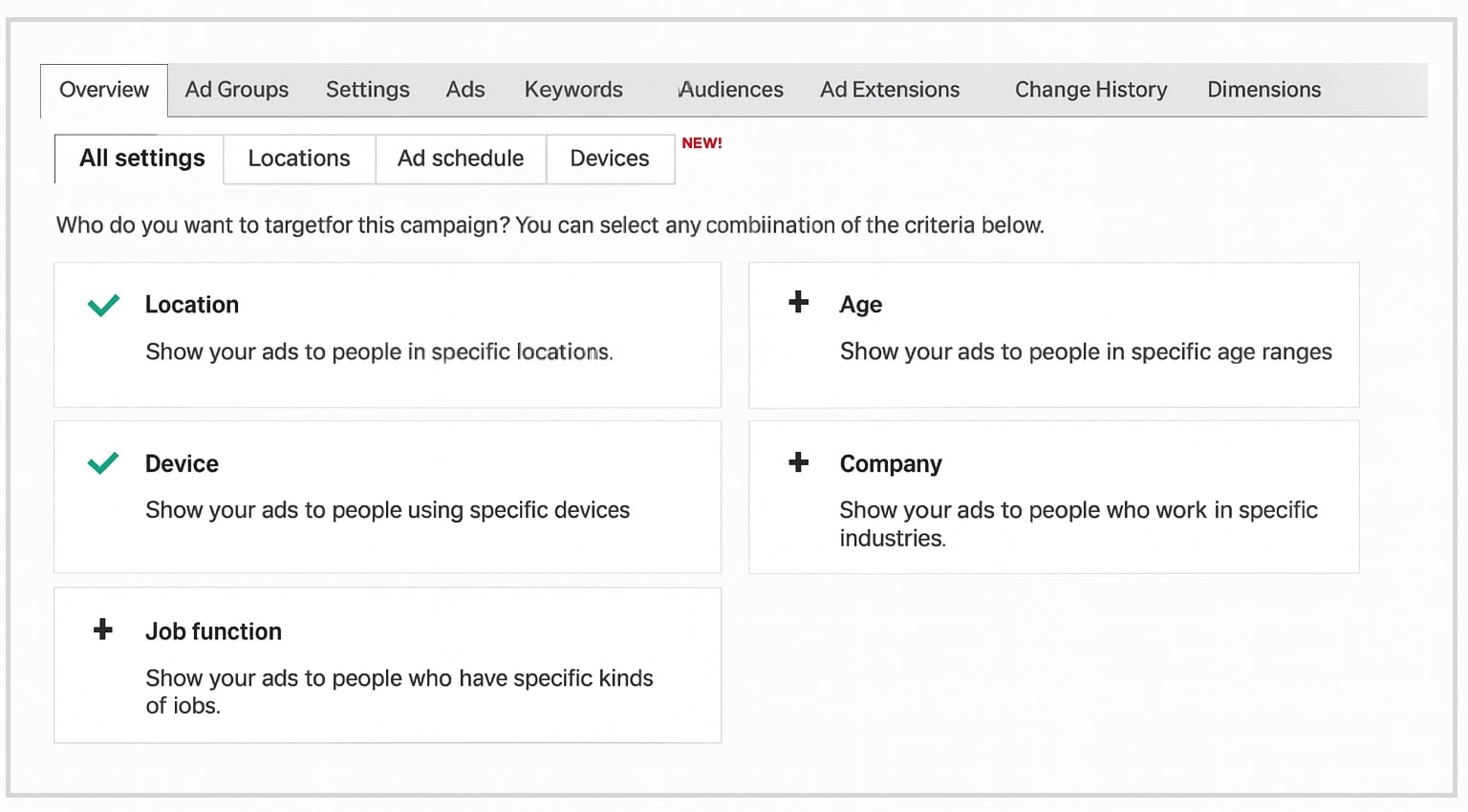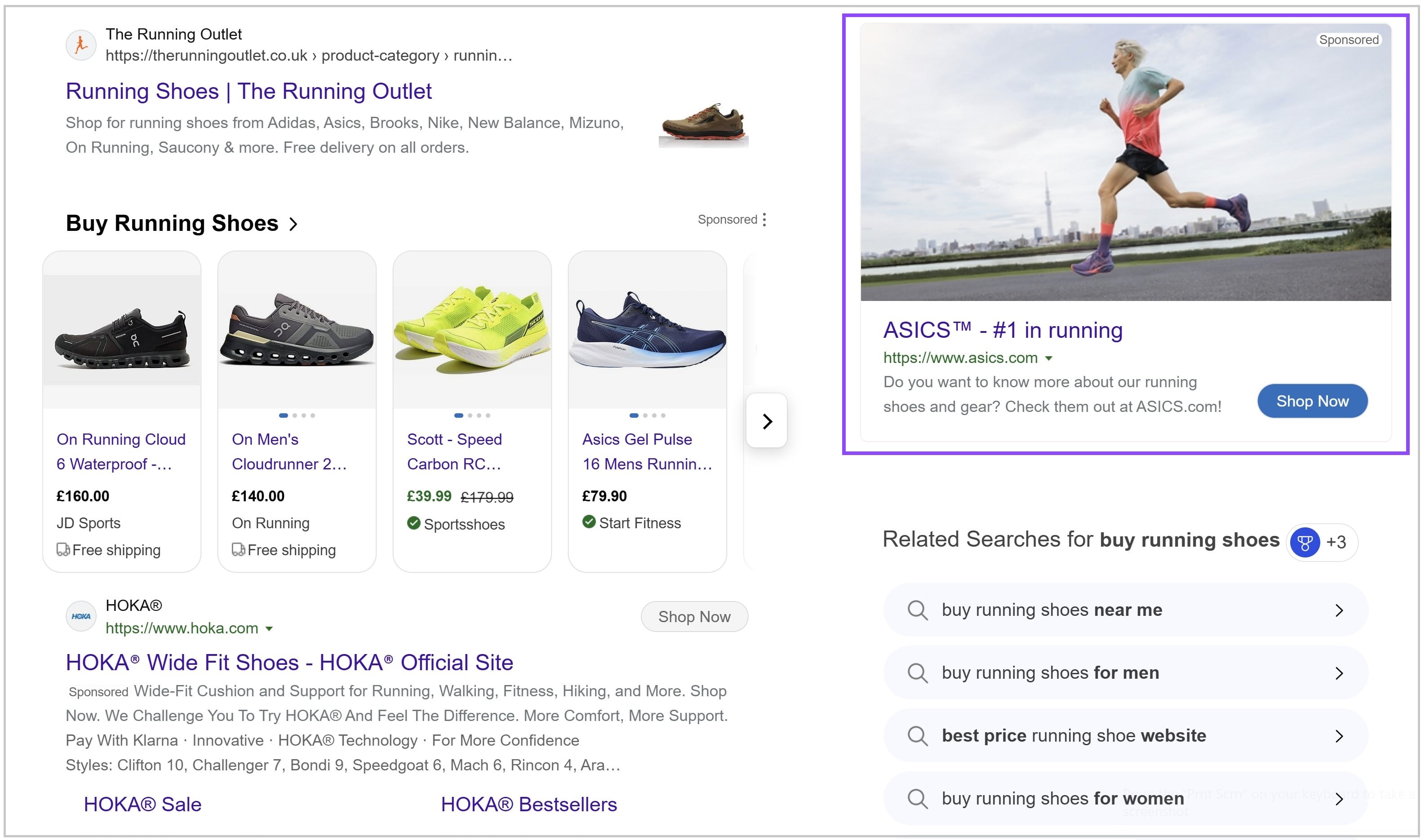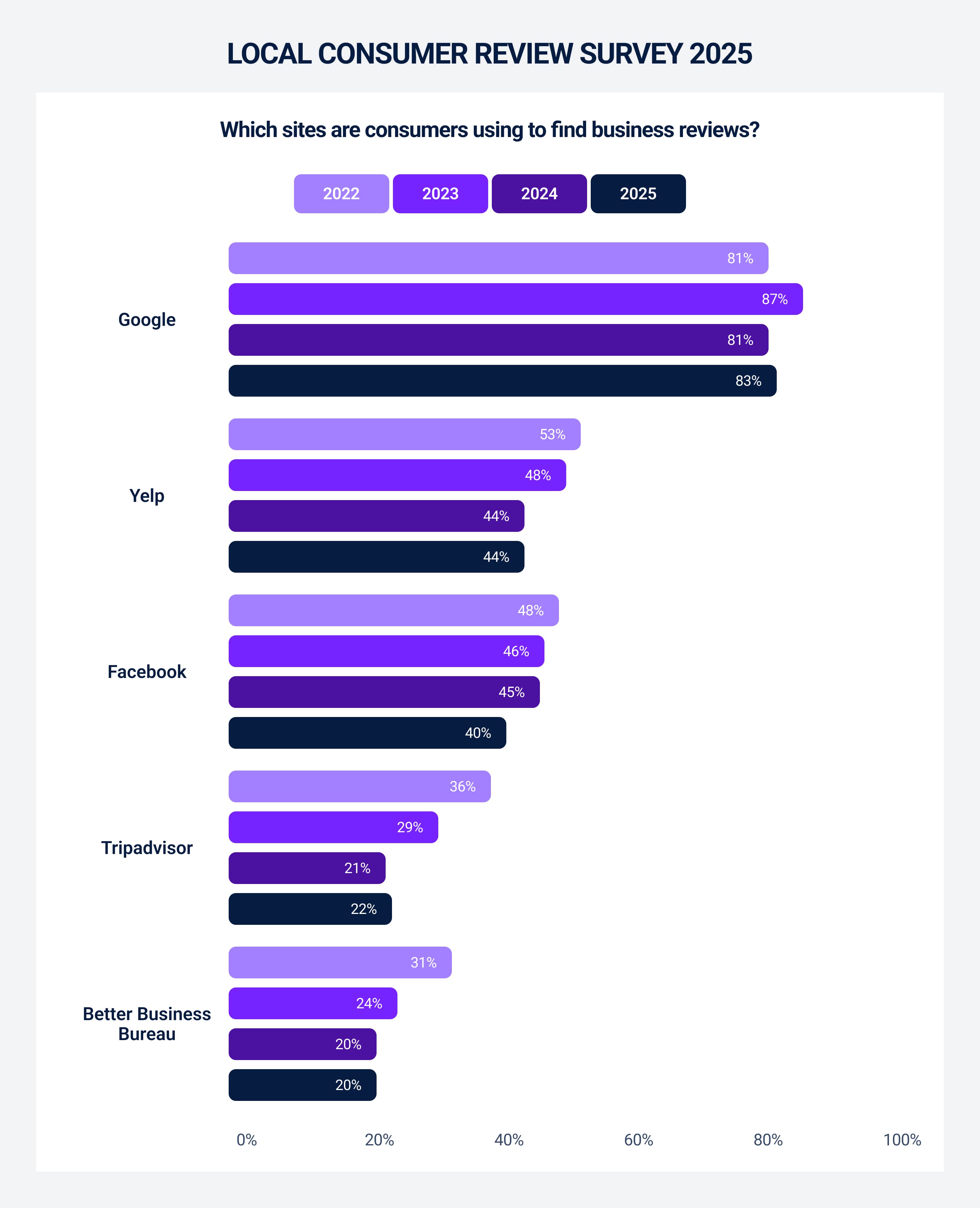Choosing between Bing ads vs Google ads is tough. Especially when you’re working with a limited budget. Both are powerful pay-per-click (PPC) platforms, but they generally serve different audiences and budgets.
So throughout this blog, we will explore how Bing (Microsoft Advertising) and Google Ads compare (everything from reach to cost). We’ll share:
- Personal insights
- Real data
- Links to useful resources (like our SEO and Paid Search services)
By the end of this comparison, you’ll have a clear sense of which platform best suits your goals, audience, and budget. Whether you go with Bing, Google, or a mix of both, we will detail the best smart strategy and ongoing tests that will be key to your PPC success.
A Quick Overview of Both Platforms
Here’s what to expect from both options:
What Are Google Ads?
Google Ads is Google’s flagship ad platform, which started in 2000. It lets businesses like yours bid on keywords so your ads are shown in Google Search results, as well as on Google’s Display Network (billions of sites, apps, and YouTube).
They also support:
- Shopping ads (product listings)
- App promotions
- And more
Google handles ~90% of global searches, so you’re getting huge reach with them. Google itself reports that on average, businesses earn $2 for every $1 spent on Google Ads (an ROI of 200%).
So, how does Google’s domination of the search engine market impact your business?
You’ll benefit from Google’s massive user data and advanced targeting (in-market, affinity, similar audiences). And you can access various formats (text, display banners, video, shopping, etc.).
If you need brand awareness or have a broad target audience (e.g. consumer retail, local services, or apps), Google Ads is typically the go-to choice.
What Are Microsoft (Bing) Ads?
Bing Ads is Microsoft’s PPC platform (it’s now called Microsoft Advertising). It covers Bing’s search engine, search results on Yahoo and AOL, and a range of other partner sites.
So buying Bing Ads means you hit three search engines at once. Bing Ads offers search ads, shopping/product ads, and even some display formats. However, the most unique angle is the audience: Bing’s user base tends to be older, more affluent, and more B2B-oriented.
For example, Microsoft reports ~70% of Bing users are aged 35-65, one-third have >$100K household income, and there are ~66 million people reachable on Bing who aren’t on Google.
You can even import Google campaigns into Bing Ads if you’re worried about the learning curve from Google to Bing.
And because fewer advertisers compete on Bing, the costs are usually lower. So Bing Ads (Microsoft Ads) is a valuable, albeit smaller, channel. Don’t rule it out if you’re targeting older professionals or looking to save money.
Core Differences Between Bing Ads and Google Ads
Is the only real difference here that you’re getting a broader audience with Google, or is there more to it?
Market Share and Reach
Google dominates search: it holds roughly 90% of worldwide search share (mobile and desktop combined), whereas Bing is around 4-5%.
In the U.S. desktop market, Bing’s share jumps to about 12%, but Google still dwarfs it at ~79%. So in practice, this means Google Ads reaches far more people.
- Global Reach: Google handles about 8.5 billion searches per day, whereas Bing’s share is a fraction of that.
- Regional Nuances: If your audience is US-centric, remember Bing is more popular on Windows desktop (it’s the default on many PCs), so in some B2B or suburban markets it grabs ~25-27% of U.S. searches. Internationally, Bing’s share is much smaller.
- Implication: Google wins on sheer reach. If your goal is to maximize total impressions (brand awareness, large-scale eCommerce, app installs), Google Ads gives you a bigger audience. That said, the quality of Bing’s audience can be very valuable (see below), so it’s not just a matter of who has the largest reach.
Audience Demographics
Who’s searching on each platform? The demographics tilt depending on what platform you’re using:
- Bing’s audience: They’re generally older, wealthier, and more often in B2B roles. For example, over 54% of Bing’s audience is aged 45+, and about 33-38% have household incomes >$100K. Around 40% of Bing users are between 35-54, and 43% are married. These users often come via Microsoft Windows and Office devices, or via Bing/Hulu/AOL usage.
- Google’s audience: Far broader and diverse. Google searchers skew younger (largest groups are 18-34) and cover all demographics globally. This means you reach everyone, from college students to retirees.
If your product or service targets seniors or business owners (e.g. B2B software, finance, luxury goods), Bing’s demographic slice can be a big advantage. But for mass-market or younger audiences (gaming, fast fashion, mobile apps), Google is likely better.
CPC (Cost Per Click) and CPA Differences
Numerous benchmarks show Bing CPCs well below Google’s:
- According to WordStream data, the average CPC across industries is about $1.54 on Bing, versus roughly $4.66 on Google (U.S. search).
- In practical terms, advertisers often report Bing CPCs 30-70% lower than Google’s on similar keywords.
- Bing tends to bring higher conversion rates (CVR) and click-through rates (CTR) as well.

In short, Bing Ads is often cheaper per click/acquisition. We can’t guarantee lower total spend (less volume), but your budget does stretch further on Bing.
Ad Placement and Network Partners
The ad “network” for each platform is also something that differs:
Google Ads spans:
- Google Search (so that’s all country domains, Google Maps/Local results)
- The Google Display Network (~2 million websites/apps)
- YouTube (video ads)
- Gmail
- Discover feed
- Google Shopping
Google also has Search Partners (like Ask.com, AOL, some news sites) where search ads can show.
Bing Ads, on the other hand, places search ads on Bing.com plus partner sites. That includes:
- Yahoo!
- Search and AOL Search (Verizon Media)
- DuckDuckGo
- Ecosia
- And others
Microsoft also runs Audience (in-page) placements on MSN, Outlook.com, Microsoft Edge, and Microsoft Publisher network.
So Google will always give you broader, more global coverage (search + massive display/video reach), whereas Bing delivers search ads to a smaller but unique audience.
GROW YOUR INSTAGRAM FOLLOWING VIA OUR CELEBRITY CAMPAIGNS
Leverage the power of the worlds A-list celebrities to grow your Instagram every month
VIEW CAMPAIGNSFeatures & Tools Breakdown
Let’s explore the main tools you’ll be getting with each:
Keyword Targeting & Match Types
Both platforms use the same basic keyword match types:
- Broad Match, Phrase Match, Exact Match (and Broad Match Modifier used to exist on Google, but it’s now merged into broad/phrase).
- Negative Keywords are supported on both (to exclude terms).
- In practice, Google’s exact/phrase now includes more “close variants” (plurals, stemming), whereas Bing’s matching is historically a bit stricter on word order and stop words. But for most advertisers, the match options are functionally similar.
Regardless of the platform, you should still plan your keywords the same way. If you have a Google campaign, you can export it and import into Bing, and the keyword targeting will largely carry over (you may need to adjust broad match terms or exact match variants slightly).
Audience Targeting Options
Google Ads offers a deep set of audience tools:
- Demographic targeting (age, gender, household income)
- Affinity and in-market segments
- Detailed demographics
- Similar audiences
- Custom intent
- Remarketing lists (such as email)
You can even layer audiences with keywords (people who searched X and are in audience Y).
Bing Ads offers many of the same basics (age/gender, locations, devices, time, remarketing) but also some unique options, most notably LinkedIn Profile Targeting.
Because it integrates nicely with LinkedIn, Bing allows you to target by job title, company, and industry. That’s a major benefit for B2B advertisers (remember, most Bing users are older and B2B-oriented).

For example, a software company can serve search ads specifically to IT managers or CFOs at certain companies. Google has nothing exactly like that. Bing also offers in-market and custom audiences (like Google’s).
Automation & AI Capabilities
Google Ads is renowned for automated features:
- “Smart” bidding (maximize conversions, Target CPA/ROAS)
- Dynamic search ads
- Responsive ad formats
- Newer Performance Max campaigns that auto-deploy across search/display/Shopping/YouTube using AI. Google’s AI will automatically test ad creatives and audiences to optimize ROI.
Bing Ads also offers automated bidding strategies and dynamic search ads. Microsoft has added features like Campaign Experiments (A/B testing within the interface) and some AI-powered recommendations.
However, it’s generally a few steps behind Google in product launches. (For example, Bing has no Performance Max equivalent yet.) That said, Microsoft is bringing AI into Bing too; it now has an AI-backed Prominence metric (Search Impression Share analysis) and integration with LinkedIn data for smarter targeting.
We advise using Google’s AI tools when you need broad automation, but consider Bing’s simpler automation for control. In either case, manual checks and optimizations will still pay off.
Ad Formats and Extensions
Both networks support text ads with various extensions (sitelinks, callouts, structured snippets, calls, locations, etc.). Some differences:
Google Ad Formats
- Text search ads (expanded and responsive)
- Display banner ads
- Video (YouTube) ads
- Shopping/Product Listing ads
- App install ads
- Discovery ads
- And more
YouTube integration is also a huge advantage for video. Generally, good content is essential for ad formats and landing page performance.
Bing Ad Formats
Bing supports text ads (mostly responsive search ads now), Product Ads (Bing Shopping ads), and, uniquely, video extensions. In mid-2024, Microsoft launched an extension that lets you include a short video snippet within a Bing search ad.

Bing also allows multimedia ads in its Audience network. One interesting difference: Google’s Display Network is vast, while Bing’s display options are more limited. But if you run Shopping campaigns, Bing’s Product Ads use your Merchant Center just like Google Shopping ads do.
Campaign Setup and Interface Usability
So, how do you get started on either platform?
Learning Curve for New Advertisers
If you’re new to PPC, you’ll find Google Ads intimidatingly powerful but complex. The interface has many tabs and features, and Google often rolls out new tools quickly.
Bing Ads’ interface looks and works similarly (since 2019 they aligned much of it to Google’s), but with fewer options cluttering the dashboard.
There are fewer reports and graphs, and the campaign creation wizard is a bit more guided. However, due to its size, Google provides more tutorials and in-interface help.
If you’re already comfortable with Google Ads, Bing will feel familiar (especially since you can import campaigns).
But if you’re starting entirely fresh and want development support, Bing might be a bit easier to learn. Either way, spend time learning Google’s new features (Performance Max, attribution models, etc.) or Bing’s specifics (Import tool, LinkedIn segments, etc.) as needed.
Importing and Syncing Campaigns
Bing Ads allows you to directly import your Google Ads campaigns, which is a major time saver.
In the Bing Ads dashboard (and API), you can choose “Import from Google Ads,” sign in with your Google account, and bring in campaigns, keywords, and settings. Bing will automatically convert Google’s keywords, bids, and ads for you.
This means you don’t have to build two campaigns from scratch. After you’ve imported, you can tweak settings (for example, setting explicit campaign start dates for Yahoo, or adjusting bids by device) but the core structure is basically already done.
Performance in Specific Scenarios
Let’s see which platform is better for different businesses:
For Local Businesses
Local businesses should use Google Ads (with location extensions and possibly Local Services Ads in applicable markets).
Google Maps and Google Business Profile (formerly “Local”) dominate local searches. In fact, ~92% of all searches use Google, and 82% of consumers turn to Google to find local businesses.

Bing’s local offering is Bing Places for Business, but its reach is tiny by comparison. It’s easy to set up, but Bing Places mostly benefits an older demographic on Windows/Microsoft devices.
Unless you have a very limited budget and your audience is known to use Bing (e.g. in certain enterprise or tech niches), prioritize Google for location-based advertising.
For B2B Companies
B2B advertisers often benefit from Bing Ads. Why? The professional demographic and LinkedIn targeting are made for B2B. You can target ads to people in specific companies or job roles via LinkedIn data, which is something Google Ads can’t do.
So a software firm could target only CFOs or engineers at Fortune 500 firms. The generally higher incomes on Bing also mean B2B conversion values can be higher.
However, Google shouldn’t be ignored. Many business decision-makers still Google things (especially millennials at work), so running Google Ads for search keywords is wise. But use Bing to capture more specialized business queries at a lower cost.
For eCommerce Brands
If you run an online store, Google Shopping (and Search) will likely bring the most volume. Google Shopping ads show up on Google.com whenever someone searches for products, so that reaches a massive audience.
However, Bing Shopping (through Microsoft Merchant Center or Shopify integration) is a growing channel with less competition and often cheaper clicks.
Data from WordStream (2019) found Shopping CPC averages: ~$0.66 on Google Shopping vs $0.46 on Bing Product Ads (note: this will vary by industry and year, but it does show you the cost gap).
So with Bing, each click costs less, and Bing’s older shoppers tend to buy more expensive items anyway. The trade-off is volume: expect far fewer impressions on Bing.
Ultimately, most big eCommerce brands run both. Use Google Ads to harvest high-volume demand (especially mobile), and use Bing Ads Shopping to capture price-sensitive or less competitive segments.
Pros and Cons Summary Table
| Feature | Google Ads | Bing Ads (Microsoft Ads) |
|---|---|---|
| Market Reach | ~90% global search share (huge global audience) | ~4% global search share; ~12% desktop US (smaller but unique audience) |
| CPC (Cost) | Higher competition, which leads to higher CPC (avg ~$4.66) | Lower competition, which leads to lower CPC (avg ~$1.54) |
| ROI Potential | Google cites ~$2 ROI per $1 (200% ROAS) | Often high ROI but lower volume |
| Interface & Tools | Very feature-rich (Performance Max, Attribution, etc.); steep learning curve | Similar UI; fewer features makes it simpler for beginners; built-in Google import (easy sync) |
| Unique Targeting | In-market/audience segments (shopping habits, etc.); YouTube/Display integration | LinkedIn profile targeting (job, company); Bing Partner network (AOL, Yahoo, DuckDuckGo) |
| Ad Formats | Search, Shopping, Display, Video (YouTube), App, etc. | Search, Shopping; now also video extensions and rich text ads |
| Best For | Broad reach (consumer markets, mobile, global brands, local SEO) | Affluent/older B2B markets, small budgets, niche audiences |
Who Should Prioritize Google Ads?
Global/Broad Audiences: Brands needing huge reach or targeting younger consumers.
- Local/Service Businesses: Those relying on Google Maps and local searches (90%+ of local queries on Google).
- Retail/eCommerce: Companies with high-volume sales and mobile shoppers.
- Media/Video Campaigns: Google is unmatched if YouTube or Display ads are key for you.
- Experimental/Priority Features: If you want the latest ad formats (Performance Max, Discovery ads), Google leads there.
Who Should Prioritize Bing Ads?
B2B & Professionals: Companies targeting decision-makers, executives, or specific industries. Bing’s LinkedIn targeting and older user base is ideal.
- Tight Budgets: Small businesses or startups that need lower CPC/CPA to stretch their ad spend further.
- High-Value Goods/Services: Luxury brands, finance, healthcare, etc., where average order value is high (fits Bing’s wealthier audience).
- Smaller Audiences: Niche markets were reaching a unique segment (even if small) adds incremental ROI.
Using Both May Be The Smart Move
Using Both May Be The Smart Move
Google and Bing audiences overlap quite minimally, so running campaigns on both platforms covers more of the market and mitigates some of the risk if one ends up underperforming.
You can also capture incremental clicks on Bing at lower costs if you split your budget (even 80/20 or 90/10 favoring Google by default).
You can cross-reference data too: insights from one platform (keyword performance, ad copy) can inform the other. In short, think of Bing as the smart extension of your Google Ads campaigns. It may be smaller, but it’s often cheaper per lead and yields unique customers.
Frequently Asked Questions
Is Bing Ads Cheaper Than Google Ads?
Yes, generally. Industry data consistently shows Bing’s average CPC is well below Google’s. For search ads, expect Bing click costs to be roughly one-third or less of Google’s on the same keywords.
The trade-off is less overall traffic, but Bing’s lower costs will generally make it much cheaper if you’ve got a strict budget to stick to. Actual costs vary by industry, so the gap is smaller in some niches. But in broad terms, Bing will stretch your budget further.
Can I Run the Same Campaigns on Both Platforms?
Absolutely. In fact, Bing Ads provides tools to do exactly that. You can import your Google Ads campaigns into Bing in minutes. Bing will convert Google’s ads (adding its own ad code format) and set up Bing versions of your campaigns.
Then after you’ve imported, review the settings and replace any Google-specific feature (like certain ad extensions) with Bing equivalents.
Use Google as the “master copy” and import the core campaign structure. Then optimize separately: for example, you may want to exclude brand terms on Bing if Google already covers them, or tweak bids where Bing performs differently.
Does Bing Ads Work for Ecommerce?
Yes, but there are a few caveats. Bing supports shopping/product ads via the Microsoft Merchant Center (or via Shopify integration). You can upload your product feed much like Google Shopping. In practice, Bing Shopping tends to have lower competition.
However, expect fewer clicks. Google still dominates ecommerce queries, especially on mobile. If you have an e-store, run Shopping and search campaigns on Google, but turn on Bing Shopping too for additional volume and possibly better ROI on high-value products.
How Do Bing Ads Perform for Small Businesses?
Bing Ads can be a solid choice for small businesses, particularly those on tight budgets. Because it is generally less competitive, small advertisers can rank higher for their keywords on Bing at a lower cost. This means you can get meaningful clicks on Bing even with a $1-2 daily budget, whereas Google might spend that in an hour without a conversion.
Small businesses with local or niche products often see surprisingly good results on Bing. Since many small businesses also use SEO to capture organic traffic, adding Bing Ads as a targeted paid channel can fill gaps (especially among older demographics).
What’s the Minimum Budget for Bing Ads?
Technically, there is no minimum spend required by Microsoft to run Bing Ads. You set your own daily budget and bids. Remember, the ability to start small is a point in Bing’s favor for startups and small shops. You aren’t locked into a $500/month payment because you pay as you go.

